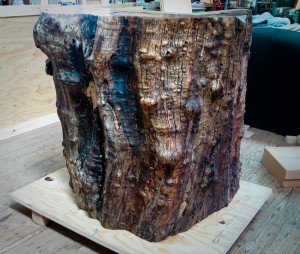Just What the Heck is “Solid Character-Grade” Wood Anyway?
· How to Talk Like John · character grade, lingo, wood The industrial process of harvesting trees for wood products has become such a specialized method that only a very small percentage of trees are deemed usable. They must fit into a matrix that includes such considerations as log size, hardness, color and grain structure and aesthetics, mill-ability, weight, and more. As most wood products are now engineered, the logs must be veneer-capable…in other words they must fit on a rotary or sequential slicer that filets or ribbons off the log a cardboard-thin skin capable of being handled by specific machinery, means, and methods.
The industrial process of harvesting trees for wood products has become such a specialized method that only a very small percentage of trees are deemed usable. They must fit into a matrix that includes such considerations as log size, hardness, color and grain structure and aesthetics, mill-ability, weight, and more. As most wood products are now engineered, the logs must be veneer-capable…in other words they must fit on a rotary or sequential slicer that filets or ribbons off the log a cardboard-thin skin capable of being handled by specific machinery, means, and methods.
As such, anything too large, irregular, crotched, unique, and different cannot pass through the industrial process. What IS used is a banal cartoon of the world of wood…perfectly straight grain, homogenized, devoid of knots, inclusions, imperfections. Although they intend to be prime grade A materials, they actually lack all the visual character and information that is the birthright of a real tree. That world includes a visual, informational, and vibratory history of all aspects of a tree’s life, including its species characteristics as well as its individual lifetime, where it lived, climate, soil, sunlight, water conditions, historical events, traumas, boom times and more…the “terroir” of a tree.
Trees that are not compliant with the industry’s tooling and marketing demands are more often than not destined for land fill and firewood. Shocking to consider that a 250 year old hardwood sage would be cut into firewood rather than carefully milled out and allowed to tell its story. And to remind humanity that wood does NOT look like wallpaper, but rather a map of time, life, existence, and the unique trajectory of witnessing and participating in reality.
